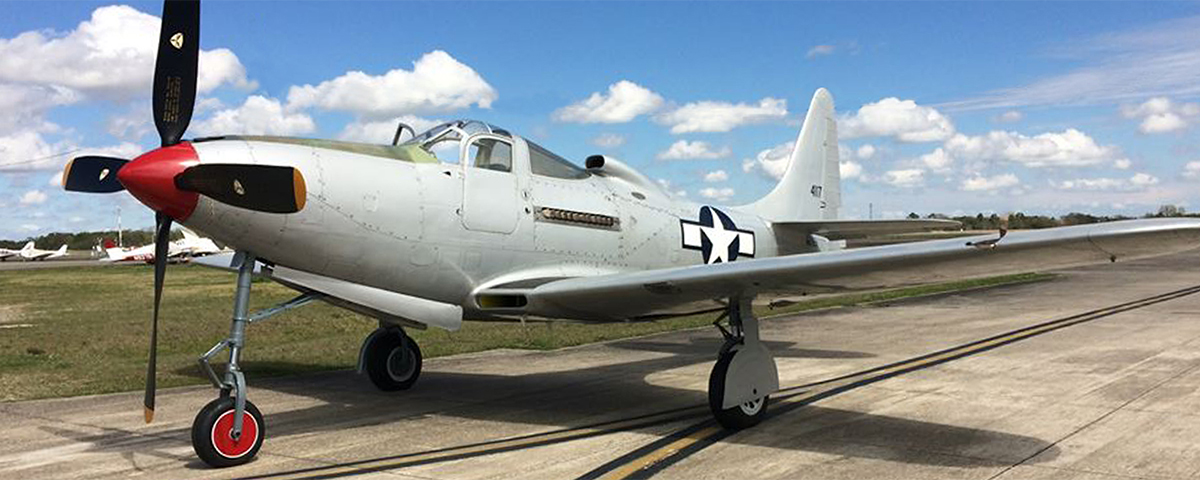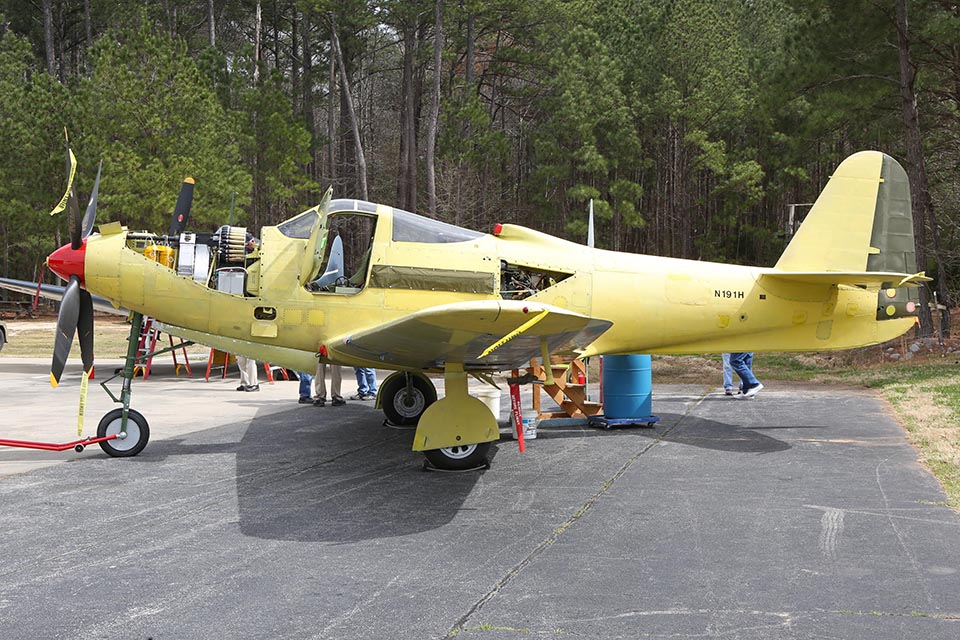The Bell P-63 Kingcobra is one of the sleekest, cleanest warbirds in the world, and the P-63F you see here, which was returned to flight by the Commemorative Air Force in May, is doubly fascinating because it’s one of a kind: Only two F models were ever built, and this is the only one to have survived. The F has a tall, NACA-derived vertical tail with a ventral extension and an added dorsal surface. And this one was the very last P-63 to be built before Kingcobra production shut down at war’s end. (G and N models were modifications of P-63s built earlier.) The CAF’s P-63F had landed gear-up in October 2013 when the fuel selector failed, and the damage required substantial belly, engine, propeller and gearbox repairs.
It’s a wonder that the P-63 line wasn’t closed before production ever began. The Army Air Forces extensively tested the design in March 1944 and concluded it was in no way a useful combat aircraft. They recommended that no more be built, though Bell produced 3,303 P-63s, 2,397 of which went to the Soviet Union. Perhaps politics played a part, perhaps the AAF simply wanted to keep Bell in business, or maybe they did it for Joe Stalin. When the Soviets begged for more Lend-Lease aircraft in the spring of 1944, AAF commander General Henry “Hap” Arnold recommended they be given every P-39 and P-63 that could be located.
The same features that made the P-63 such a handsome machine—no external radiator scoops, tricycle gear, a buried mid-engine—made it a lousy fighter. Because of the engine location, the retractable nosegear, a wing center section crammed with hidden oil and coolant radiators and ducting, and a nose largely devoted to Bell’s beloved but archaic 37mm cannon, there was zero room for fuselage fuel tanks. Wing bladders provided the only internal fuel, giving a clean P-63 a combat radius of about 80 miles. (Combat radius is the distance an aircraft can climb, fly, fight for five minutes and still have enough fuel to return to base. External tanks can greatly extend pure range, but if they have to be dropped for combat, that still leaves only internal fuel for further flight.) No U.S. P-63 ever flew in combat, and the design’s only contributions to America’s war effort were as an advanced fighter trainer and an aerial-gunnery target—the handful of up-armored RP-63 “Pinball” machines.
It’s no wonder that today the Kingcobra is one of the rarest of warbirds, yet the CAF will soon begin flying a second example—a P-63A that has been under restoration since 1999 by the organization’s Dixie Wing. They plan on flying it sometime this summer.


